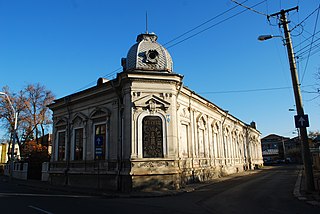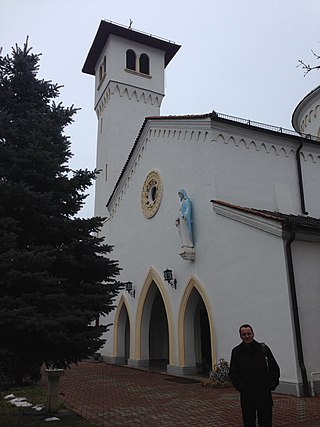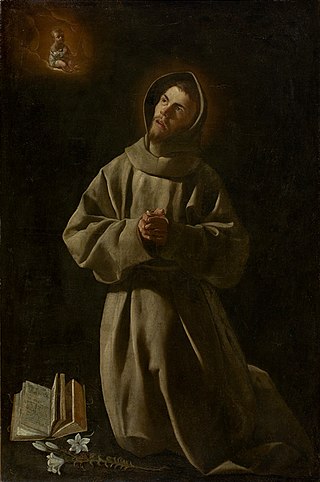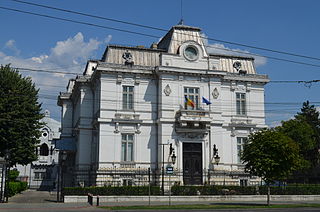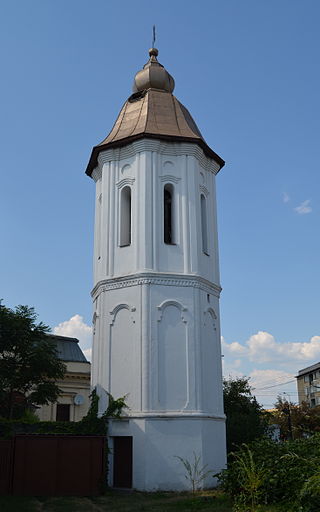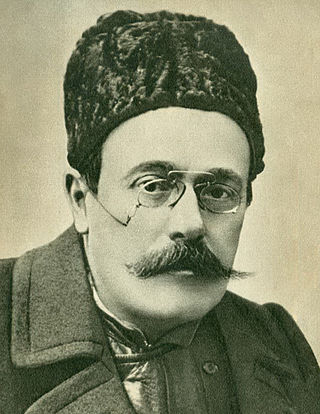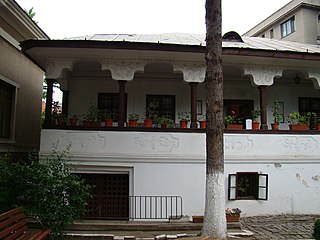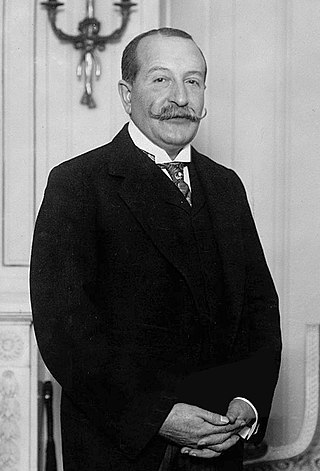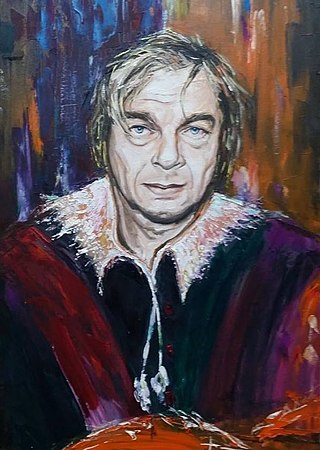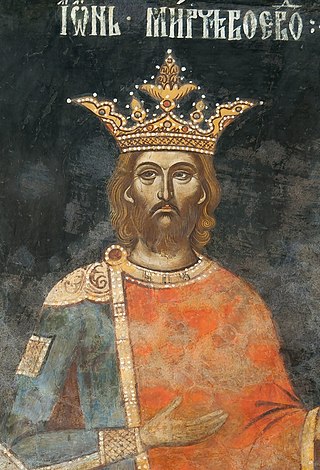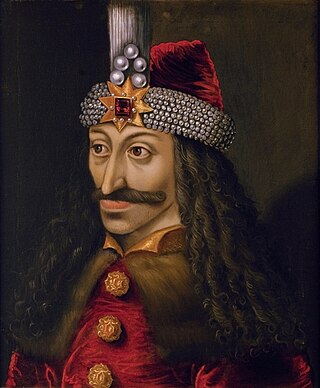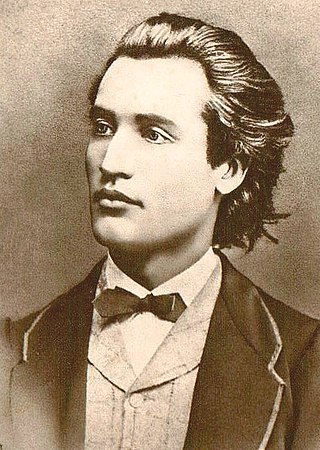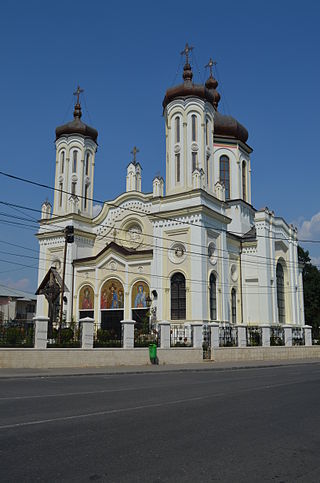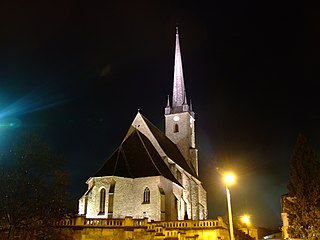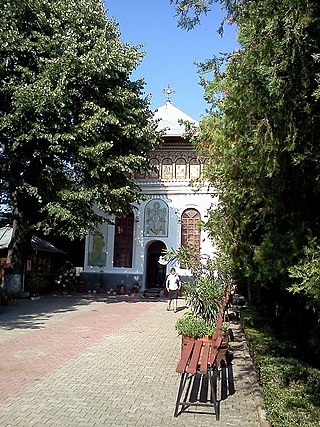Self-guided Sightseeing Tour #4 in Ploiești, Romania
Legend
Tour Facts
5.5 km
47 m
Experience Ploiești in Romania in a whole new way with our self-guided sightseeing tour. This site not only offers you practical information and insider tips, but also a rich variety of activities and sights you shouldn't miss. Whether you love art and culture, want to explore historical sites or simply want to experience the vibrant atmosphere of a lively city - you'll find everything you need for your personal adventure here.
Individual Sights in PloieștiSight 1: Biserica Buna Vestire
The "Annunciation" Church in Ploiesti is located about 300 m from the center of Ploiesti, on Plevnei Street number 2.
Sight 2: Carol Nicolae Debie
In the municipality of Ploiesti, among the statues and monuments existing in public places, there are also a series of busts of prominent personalities born in Ploiesti or whose activity is closely linked to this city.
Sight 3: National Museum of Oil
The National Petroleum Museum in Ploiesti was inaugurated on October 8, 1961, as a result of the celebration of the centenary of the Romanian oil industry, in 1857. It is among the only museums of its kind in the country and in Europe. Hosted by a beautiful edifice that allowed the arrangement of some rooms and with a courtyard that was transformed into an open-air exhibition. The museum's patrimony has grown from 800 pieces in 1961 to over 8,000 in 1994.
Sight 4: Dr. Ing. Ion Şt. Basgan
Sight 5: Biserica Romano Catolică Cristos Rege
The "Christ, King" Church in Ploiesti is a Roman Catholic place of worship located in Stefan cel Mare Street no. 13, which serves as a parish church within the Roman Catholic Archdiocese of Bucharest.
Sight 6: Sfântul Anton de Padova
Anthony of Padua, OFM, or Anthony of Lisbon was a Portuguese Catholic priest and member of the Order of Friars Minor.
Sight 7: Ion Ionescu-Quintus Prahova County Art Museum
The Prahova County Museum of Art "Ion Ionescu-Quintus" is a county museum in Ploiesti, located in Independenței Blvd. no. 1. Housed in a recently restored historical monument building, the museum holds valuable works of Romanian fine art; Graphics. From 1929 to 1956 it functioned under the name of the Pinacoteca of the city of Ploiești.
Wikipedia: Muzeul Județean de Artă Prahova „Ion Ionescu-Quintus” (RO), Website, Heritage Website
Sight 8: Biserica „Sfântul Gheorghe” - Vechi
The "Saint George" - Old Church is a Romanian Orthodox church located in the central area of Ploiesti in Romania, on Independence Boulevard, which connects the central square of the city to the South Railway Station. It is known for its bell tower, classified as a historical monument and dating from 1830–1831, although the church itself has been demolished and rebuilt since then, no longer retaining any aspect that would give it the status of a monument building.
Wikipedia: Biserica „Sfântul Gheorghe” - Vechi din Ploiești (RO)
Sight 9: Ion Luca Caragiale
Ion Luca Caragiale, commonly referred to as I. L. Caragiale, was a Romanian playwright, short story writer, poet, theater manager, political commentator and journalist. Leaving behind an important cultural legacy, he is considered one of the greatest playwrights in Romanian language and literature, as well as one of its most important writers and a leading representative of local humour. Alongside Mihai Eminescu, Ioan Slavici and Ion Creangă, he is seen as one of the main representatives of Junimea, an influential literary society with which he nonetheless parted during the second half of his life. His work, spanning four decades, covers the ground between Neoclassicism, Realism, and Naturalism, building on an original synthesis of foreign and local influences.
Sight 10: Ion Luca Caragiale Museum
The "Ion Luca Caragiale" Museum is a county museum in Ploiești, located in Str. Kutuzov no. 1. Ion Luca Caragiale was born on January 30, 1852 in the village of Haimanale, near Ploiești, Prahova county. The primary classes and the gymnasium graduated in Ploiești, and between 1868 and 1870, he attended the declaration and mimic courses at the Conservatory of Bucharest, Costache Caragiale. Between 1870 and 1872, he was a copyist at the Prahova Tribunal, then a soul and a copyist at the National Theater in Bucharest. He debuted in the press of the time in the satirical magazine "Ghimpele" (1873), where he signed different chronicles, and between 1876 - 1877, he was a corrector to "Democratic Union" - the newspaper of the group of liberals of the same name -, drafted entirely The humorous magazine "Clapon" and removed the newspaper "Romanian Nation". On May 26, 1877, he began to attend the Bucharest meetings of the "Junimii", in which he will read his comedies. Also during this time he collaborated in the newspaper "Timpul" together with Mihai Eminescu and Ioan Slavici, but also to other magazines. After the withdrawal from the newspaper "Timpul" was a school reviewer in Suceava and Neamț counties, during which he met Veronica Micle, Eminescu's friend. In 1893 he edited with Anton Bacalbașa Humoristic Magazine "Moftul Român", and in 1894, the magazine "Vatra", together with Ioan Slavici and George Coșbuc. In addition to the advertising activity, Caragiale also carried out an intense literary activity, proving to be fully, is and will be the greatest playwright of Romanian literature, his four comedies, "a stormy night" (1879), "Conu Leonida in front of the reaction "(1880)," a lost letter "(1884)," Carnavalului "(1885) and the drama" Şăastasta "(1890), being published in a relatively short period. Starting with 1897, Caragiale will "betray" the theater and publish short prose, volumes of sketches and novels: "sketches" (1897), "moments" (1901), "Moments, sketches" (1910) and "Sketch Nine ”(1910), in which a satirical comic approaches. Some of the novels are at the confluence of the comic with the tragic, and others, although psychological, are influenced by naturalism, or make room for the fantastic. In his entire work, I.L. Caragiale has managed to outline as no other writer, a comic universe and another tragic, illustrated by both dramatic and prose works, but his greatest merit is that he knew how to show artistically. a complex realized and to paint human types of great diversity. In the memory of the great playwright, in 1979, in a house built in rustic style, located on the national road Târgoviște-Ploiești opened the Memorial Museum I.L. Caragiale, which illustrates through an impressive collection the main moments of the writer's life and work: the family from which he descends and from which he inherited the passion for theater, the school years in Ploiești, the debut in the newspaper and the main publications he collaborated. affirmation in theater and prose.
Sight 11: Filarmonica Paul Constantinescu
The Ploiești Philharmonic Orchestra is a Romanian orchestra based in Ploiești, Prahova County. The orchestra's home is the Paul Constantinescu Philharmonic, located in centre of Ploiești.
Sight 12: Take Ionescu
Take or Tache Ionescu was a Romanian centrist politician, journalist, lawyer and diplomat, who also enjoyed reputation as a short story author. Starting his political career as a radical member of the National Liberal Party (PNL), he joined the Conservative Party in 1891, and became noted as a social conservative expressing support for several progressive and nationalist tenets. Ionescu is generally viewed as embodying the rise of middle-class politics inside the early 20th century Kingdom of Romania, and, throughout the period, promoted a project of Balkan alliances while calling for measures to incorporate the Romanian-inhabited Austro-Hungarian regions of Transylvania, Banat and Bukovina. Representing his own faction inside the Conservative Party, he clashed with the group's leadership in 1907–1908, and consequently created and led his own Conservative-Democratic Party.
Sight 13: Nichita Stănescu
Nichita Stănescu was a Romanian poet and essayist.
Sight 14: Mircea cel Bătrân
Mircea the Elder was the Voivode of Wallachia from 1386 until his death in 1418. He was the son of Radu I of Wallachia and brother of Dan I of Wallachia, after whose death he inherited the throne.
Sight 15: Vlad Țepeș
Vlad III, commonly known as Vlad the Impaler or Vlad Dracula, was Voivode of Wallachia three times between 1448 and his death in 1476/77. He is often considered one of the most important rulers in Wallachian history and a national hero of Romania.
Sight 16: Biserica Maica Precista
The Mother Precista Church in Ploiesti is dedicated to the "Assumption of the Virgin Mary" and is one of the most important religious, historical and art monuments in Prahova County, belonging to the local and national heritage. It has more than three centuries of existence and is located at the intersection of Armoniei, Artei and Mihai Bravul streets.
Sight 17: Mihai Eminescu
Mihai Eminescu was a Romanian Romantic poet from Moldavia, novelist, and journalist, generally regarded as the most famous and influential Romanian poet. Eminescu was an active member of the Junimea literary society and worked as an editor for the newspaper Timpul, the official newspaper of the Conservative Party (1880–1918). His poetry was first published when he was 16 and he went to Vienna, Austria to study when he was 19. The poet's manuscripts, containing 46 volumes and approximately 14,000 pages, were offered by Titu Maiorescu as a gift to the Romanian Academy during the meeting that was held on 25 January 1902. Notable works include Luceafărul, Odă în metru antic, and the five Letters (Epistles/Satires). In his poems, he frequently used metaphysical, mythological and historical subjects.
Sight 18: Casa compozitorului Paul Constantinescu
The "Paul Constantinescu" Memorial Museum is a county museum in Ploiesti, located in Str. Nicolae Bălcescu nr. 15. The establishment of this important establishment of musical culture is due, first of all, to the sister-in-law of the composer Paul Constantinescu, eng. chemist Eleonora Constantinescu who, in the summer of 1993, donated to the state, respectively to the Prahova County Museum of History and Archaeology, the building in which she lived and a valuable patrimony including a rich collection of books, pieces of furniture and documents about the life and work of the composer, who lived part of his life in this edifice.
Sight 19: Biserica Sfânta Vineri
Sight 20: Biserica Reformată
The Reformed Church in Romania is a Calvinist denomination and the largest Protestant church in Romania. The majority of its followers are of Hungarian ethnicity and Hungarian is the main church language. The large majority of the Church's parishes are in Transylvania; according to the 2021 census, 495,380 people or 2.6% of the total population belong to the Reformed Church. About 95% of the members were of Hungarian ethnicity.
Sight 21: Ilie Oană
Ilie Oană was a football player and manager.
Sight 22: Biserica Domnească Sfinții Apostoli Petru și Pavel
The Princely Church of Ploiesti, dedicated to the Holy Apostles Peter and Paul, is a historical monument located on the territory of Ploiesti. In the National Archaeological Repertoire, the monument appears with the code 130543.36.
Share
Disclaimer Please be aware of your surroundings and do not enter private property. We are not liable for any damages that occur during the tours.
GPX-Download For navigation apps and GPS devices you can download the tour as a GPX file.
